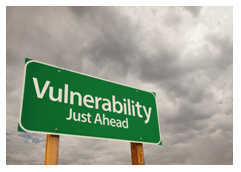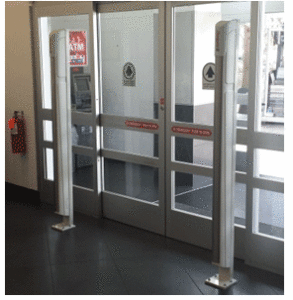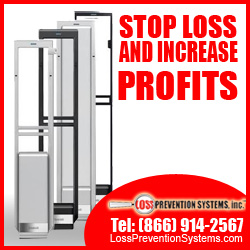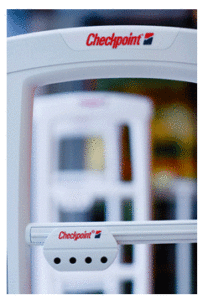 It is January and you are ready to get started on your new year. What does the start of a New Year look like for your business? Are you still trying to move out seasonal and clearance merchandise? Are you preparing to trim back payroll by releasing seasonal employees? Maybe you are already thinking about inventory and what you will need to do to prepare for that day. There are all sorts of ways retail owners and managers start the New Year but I would suggest that before you look forward you take time to look back on the previous year.
It is January and you are ready to get started on your new year. What does the start of a New Year look like for your business? Are you still trying to move out seasonal and clearance merchandise? Are you preparing to trim back payroll by releasing seasonal employees? Maybe you are already thinking about inventory and what you will need to do to prepare for that day. There are all sorts of ways retail owners and managers start the New Year but I would suggest that before you look forward you take time to look back on the previous year.
There are a couple of reasons I would suggest reflecting on what the past year has been like for the business. First, by taking the time to reflect on the year you can celebrate the store wins with the entire store team. Employees want to know how their contributions have helped the store meet goals that were set. You may have one or one hundred successes to share but your entire team has put in the work and should be given a chance to share in the successes. It can be a simple cake in the breakroom or a small in-store party but let your employees know that their efforts paid off and are appreciated.
Another reason for reflection is that you can evaluate what did not go as planned. This is when you pull out planning documents or action plans and look at what goals were not reached. Did you meet your sales goals? Did you make stock shortage objectives? Did you meet your employee turnover goals? If you cannot celebrate an item as a win you will want to move that to the new store action plan for this year. You and your management team will need to consider what can be done differently to achieve the goals you set and missed. This is not a 5-minute task. This will require the team to drill down to the causes that led to a missed goal and then plan how to improve it. Sometimes this can feel personal and everyone needs to leave their feelings outside the room. Approach the problem as a group and find ways to help each other with action items.
One of my favorite tools for a New Year is what I have adopted from several workplaces, a “What Works/What Didn’t Work” session. I have seen these done by only a management team but the truly effective sessions include team members and hourly staff. The employees will often provide you with insight into problems you did not know existed. Here is an example; you may think you have a good return policy and your return desk employees are happy. You don’t see anything that indicates problems with your refund program. What you may not be aware of is that your service desk employees are unhappy because they feel that managers are not supporting them after they turn down a refund with no receipt. The managers are called when the customer is upset and the manager arrives and tells the customer they “will take care of it”. Sure, the customers are happy and the policies look like they are enforced but the service desk employees feel foolish and undermined. A “What Worked/What Didn’t Work” session can help you see how you can improve policies, services and improve morale. When you conduct one, make sure you also ask your employees for suggestions on how to improve what they think did not work. Don’t let it simply be a gripe session. It also allows you to clarify reasons some policies may be in place that employees were unaware of before the meetings.
After you have celebrated, evaluated and set new goals you are almost ready to jump into your New Year. Make sure your goals are realistic and create plans that will be effective in achieving those goals. If reducing shortage by .5% is your goal, you may want to install an Electronic Article Surveillance system. If making your hiring process easier and reducing paperwork is a goal, Loss Prevention Systems, Inc. can help you with their Applicant Management Center. If parking lot break-ins are an issue you can request improved lighting from your property management company. If you need help in risk assessment and loss reduction Loss Prevention Systems, Inc. offers a consultation package that involves everything from an onsite visit to a comprehensive loss prevention policies and procedures package.
Start your year off right with a look back at the previous year. Share wins, evaluate opportunities and work as a team to create plans that will lead to an even better year than last. Make 2019 a year of growth and prosperity and consider taking Loss Prevention Systems, Inc. along as a partner!
 Have you ever noticed how we all anticipate a New Year will bring new and exciting things into our lives (or businesses) but after the first month we often realize that nothing is new or improved or better? In fact, we may be disappointed as the year progresses that problems we hoped would be resolved (read, “magically disappear”) are still there. We make resolutions at the beginning of the year that are meant to help “improve” or “fix” something we know is an opportunity but then we slide back into our routines and those “problems” don’t get any better.
Have you ever noticed how we all anticipate a New Year will bring new and exciting things into our lives (or businesses) but after the first month we often realize that nothing is new or improved or better? In fact, we may be disappointed as the year progresses that problems we hoped would be resolved (read, “magically disappear”) are still there. We make resolutions at the beginning of the year that are meant to help “improve” or “fix” something we know is an opportunity but then we slide back into our routines and those “problems” don’t get any better. Loss Prevention is a wonderful career choice that can lead to other positions in retail. There are, however tips I wish I had known before I began the job that would have prepared me for the adventure I was about to embark on. I started out in a Loss Prevention Associate position after spending four years as a U.S. Air Force Law Enforcement Specialist and another 2 ½ years earning a Bachelor’s Degree.
Loss Prevention is a wonderful career choice that can lead to other positions in retail. There are, however tips I wish I had known before I began the job that would have prepared me for the adventure I was about to embark on. I started out in a Loss Prevention Associate position after spending four years as a U.S. Air Force Law Enforcement Specialist and another 2 ½ years earning a Bachelor’s Degree. One of the most prevalent crimes in the United States is shoplifting.
One of the most prevalent crimes in the United States is shoplifting. NO! not yet. Before we begin patting ourselves on the back you must remember that your Sensormatic System is only part of your shoplifting solution. Your Sensormatic System will protect your merchandise however, many shoplifters are determined and will try to steal anyway. The Sensormatic System itself is a deterrent. Its mere presence will dissuade many shoplifters.
NO! not yet. Before we begin patting ourselves on the back you must remember that your Sensormatic System is only part of your shoplifting solution. Your Sensormatic System will protect your merchandise however, many shoplifters are determined and will try to steal anyway. The Sensormatic System itself is a deterrent. Its mere presence will dissuade many shoplifters.
 Maybe you have seen it before and never gave it much thought, you walked by a cash register and saw a gift card lying next to it. A customer probably just changed their mind, right? Perhaps you saw your salesfloor person wearing a heavy jacket while working but you just attributed it to them being cold all the time. You may notice cash shortages periodically but they are under $10 and some people get busy and make little mistakes, it happens. Then there is the cashier that seems to be really interested in the store and always reports suspicious people he sees. He even asks managers if there might be security camera footage that could be reviewed to see the “suspect” in case they return. There is the saleswoman who finds a lot of empty packages on the floor and reports them to the manager and where she found them so managers would know about theft taking place in the store. These each seem like harmless issues on the surface but could there be something more nefarious going on under your nose? Is something starting to seem a bit curious after all? If you are suspecting something dishonest may be going on in your store what is your next step?
Maybe you have seen it before and never gave it much thought, you walked by a cash register and saw a gift card lying next to it. A customer probably just changed their mind, right? Perhaps you saw your salesfloor person wearing a heavy jacket while working but you just attributed it to them being cold all the time. You may notice cash shortages periodically but they are under $10 and some people get busy and make little mistakes, it happens. Then there is the cashier that seems to be really interested in the store and always reports suspicious people he sees. He even asks managers if there might be security camera footage that could be reviewed to see the “suspect” in case they return. There is the saleswoman who finds a lot of empty packages on the floor and reports them to the manager and where she found them so managers would know about theft taking place in the store. These each seem like harmless issues on the surface but could there be something more nefarious going on under your nose? Is something starting to seem a bit curious after all? If you are suspecting something dishonest may be going on in your store what is your next step? The retail industry loses an approximate $45 billion a year due to shoplifting, organized retail crime, merchant, and clerical errors. For the small retail owner, any loss due to shoplifting puts a financial strain on their ability to do business, hire more personnel or invest and grow their business.
The retail industry loses an approximate $45 billion a year due to shoplifting, organized retail crime, merchant, and clerical errors. For the small retail owner, any loss due to shoplifting puts a financial strain on their ability to do business, hire more personnel or invest and grow their business. How many times have you caught yourself in a conversation with another manager or a supervisor discussing a seasonal merchandise question or an inventory preparation question and found yourself saying, “I think we did it this way” or “ It seems to me customers were buying such and such last year”? It can be frustrating, especially when the discussion may influence whether an item should be carried or if it was carried the prior year was it a flop? The same thing happens with inventory. Did we start prepping 5 days out? No? Maybe it was 3 days out. Having checklists can make these conversations fewer in number and improve productivity as well as sales performance.
How many times have you caught yourself in a conversation with another manager or a supervisor discussing a seasonal merchandise question or an inventory preparation question and found yourself saying, “I think we did it this way” or “ It seems to me customers were buying such and such last year”? It can be frustrating, especially when the discussion may influence whether an item should be carried or if it was carried the prior year was it a flop? The same thing happens with inventory. Did we start prepping 5 days out? No? Maybe it was 3 days out. Having checklists can make these conversations fewer in number and improve productivity as well as sales performance. Having to balance a customer friendly environment that makes patrons feel like you want their business and keeping a structure in place that ensures the store is profitable can be difficult. This is especially true when it comes to customer returns. At times, return policies even seem to put store management and loss prevention teams at odds with each other. On one hand, stores are afraid that a strict return policy will turn off regular customers and result in a loss of business. On the other hand Loss Prevention teams in their efforts to…well…prevent losses have a tendency to want to tighten procedures on everything. There is an argument to be made for both sides but there may also be a happy middle ground where both can come to an agreement.
Having to balance a customer friendly environment that makes patrons feel like you want their business and keeping a structure in place that ensures the store is profitable can be difficult. This is especially true when it comes to customer returns. At times, return policies even seem to put store management and loss prevention teams at odds with each other. On one hand, stores are afraid that a strict return policy will turn off regular customers and result in a loss of business. On the other hand Loss Prevention teams in their efforts to…well…prevent losses have a tendency to want to tighten procedures on everything. There is an argument to be made for both sides but there may also be a happy middle ground where both can come to an agreement. Shoplifters seem to be getting bolder than ever. Much of this is greed. Many people simply want stuff and have no moral compass. Others are emboldened by lax law enforcement or Politicians that pass laws that do little to protect you. Whatever the case be, it has a negative impact on Retailers. We are expected to open our stores, compete, pay employees, pay expenses, taxes…. And make a profit. Shoplifting theft is yet another pressure on us.
Shoplifters seem to be getting bolder than ever. Much of this is greed. Many people simply want stuff and have no moral compass. Others are emboldened by lax law enforcement or Politicians that pass laws that do little to protect you. Whatever the case be, it has a negative impact on Retailers. We are expected to open our stores, compete, pay employees, pay expenses, taxes…. And make a profit. Shoplifting theft is yet another pressure on us.